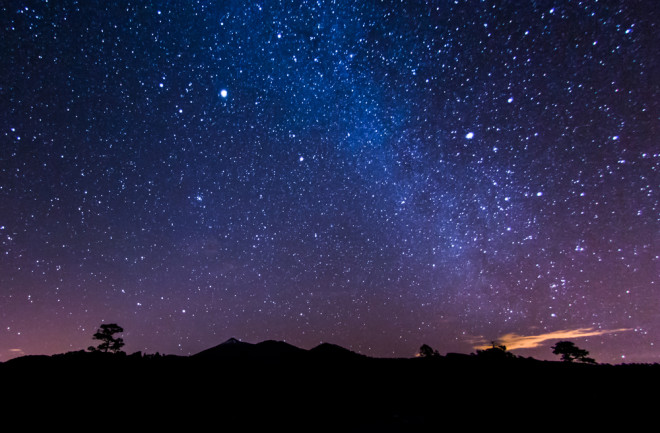An avid stargazer may notice that apart from the gleaming white stars that sprinkle the night sky, there are red, yellow, blue and orange stars. However, what you'll never see are green stars. Why is that, and why are some stars different colors than others? The answer may surprise you.
What Color Are Stars?
On a typical cloudless night — depending on the level of light pollution — you'll see thousands of bright white stars. On certain nights throughout the year, you'll even get a glimpse of more colorful stars. Stars like Betelgeuse in the constellation Orion glow red.
And Rigel, a star in the same constellation, shines a sharp blue. Inside the constellation Auriga blazes the yellow star, Capella — the sixth brightest star seen from Earth. And Antares burns a reddish-orange color in the heart of Scorpio. Alas, there are still no green stars.
Read More: Sun-Like Star Discovered Orbiting Black Hole
Why Are Stars Different Colors?
A star's color indicates its surface temperature. There are typically five colors, ranging from hottest to coldest: blue, white, yellow, orange and red, similar to a flame. The hottest stars — blue stars — have a surface temperature of about 10,000 to 50,000 Kelvin (K). Our Sun is considered a yellow star with a surface temperature of nearly 6,000 K.
As a star burns, it emits light. Any matter above the temperature of absolute zero (about -273 Celsius) will emit light. The amount of light it gives off, and more importantly the wavelength of that light, depends on the temperature. The warmer the object, the shorter the wavelength.
Cold objects emit radio waves. Extremely hot objects emit ultraviolet light. At a very narrow array of temperatures, hot objects will emit visible light (wavelengths from roughly 300 nanometers to about 700 nm).
Mind you; the objects don't emit a single wavelength of light.
Blackbody Curve Graph
Instead, they emit photons in a range of wavelengths. Scientists use what is known as a blackbody curve graph to plot out the wavelengths of light emitted by an object on a color spectrum. While a blackbody curve graph uses a color spectrum, not all of the colors on the spectrum are visible to the human eye. For example, our Sun peaks at the green part of the blackbody curve color spectrum, but because it also emits a lot of light in colors such as red and blue, the Sun is clearly white when imaged from space.
Our Eyes Playing Tricks
Our eyes have light-sensitive cells in them called rods and cones. Rods are the brightness detectors and are blind to color. Our eyes have three kinds of cones that help us see color: red cones, blue cones and green cones. When light hits them, each gets triggered by a different amount; red light — say, from a strawberry — really triggers the red cone, but the blue and green cones stay rather calm.
Most objects don't emit (or reflect) one color, so the cones are triggered by varying amounts. An orange, for example, triggers the red cones to go about twice as much as the green cones but leaves the blue ones alone. When the brain receives the signal from the three cones, it says, 'This must be an orange object.' If the green cones see just as much light as the red, with the blue ones not seeing anything, we interpret that as yellow. And so on.
So the only way to see a star as green is for it to almost exclusively emit green light. However, stars are always producing more than one wavelength of light. Any star emitting mostly green will also be putting out lots of red and blue, making the star look white. Changing the star's temperature will make it appear slightly orange, yellow, red or blue, but you just can't get green. Our eyes simply won't see it that way.
That's why there are no green stars. The colors emitted by stars and how our eyes see them pretty much guarantee it.
Read More: Optical Illusions Are Weirder Than You Think
This article was originally published in 2008 and has since then been updated with new and relevant information in 2023.

